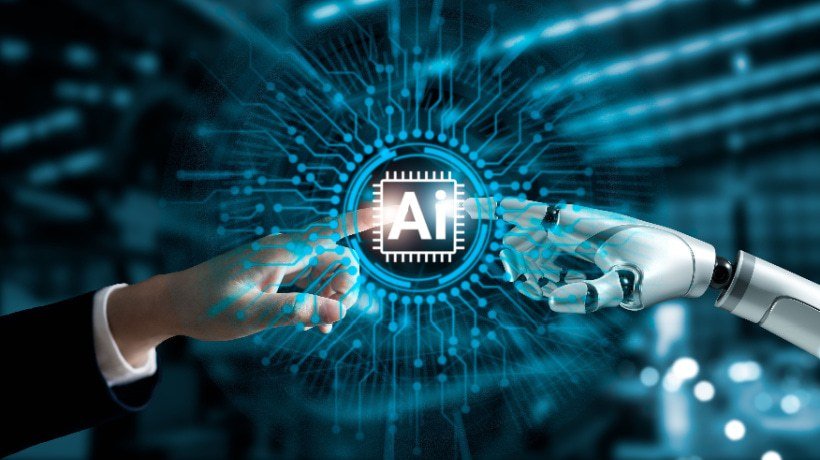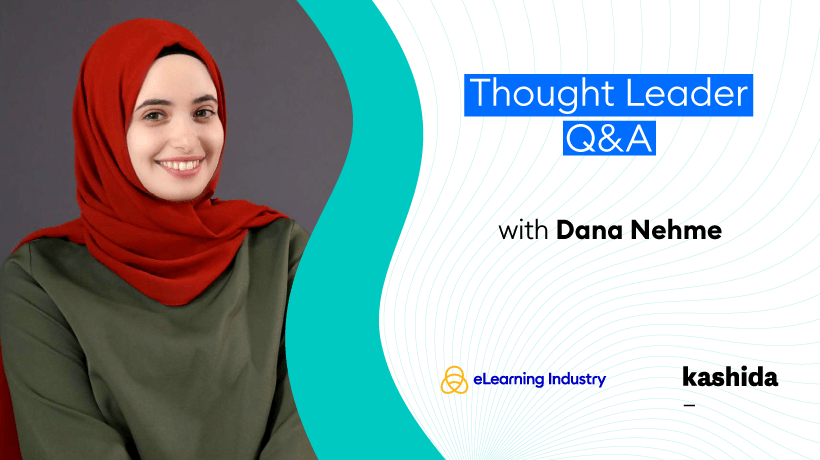Matching eLearning Content Features And Solutions To Learning Needs
When selecting an eLearning provider, it’s easy to get distracted by all the features, like gamification, AI, or immersive learning. These innovations can be exciting, but it’s important to ask whether they serve your organization’s learning goals. A good provider will start by understanding your vision and your learners, rather than just promoting their most popular products. So, it’s all about the solutions they have to offer, whether those solutions come in the form of features, tools, or a different approach to Instructional Design altogether.
For example, if you have teams across different countries, you might focus on mobile-friendly microlearning, easy translation, and real-time performance tracking. In contrast, a manufacturing company may need hands-on simulations using AR or VR to help employees practice safety procedures. Learner demographics are important too. Are your learners tech-savvy and prefer interactive content, or do they prefer more traditional learning? Younger employees may enjoy gamified modules and social learning tools that encourage collaboration and competition. Meanwhile, more experienced teams may prefer scenario-based learning or videos that directly relate to their daily tasks. Knowing your audience will help you choose your features.
Overall, finding the right eLearning content provider and the right features involves aligning the provider’s solutions with your organizational goals and your learners’ preferences. This way, training becomes a meaningful experience that enhances performance, engagement, and growth. Below, we will dive into the most popular eLearning content features and solutions and see which ones are most suitable for you.
What You’ll Find Here…
10 Most Common And Essential eLearning Solutions
1. Gamification
People enjoy games. They love making progress, earning points, and competing with friends. These elements can also enhance eLearning, which is known as gamification. Gamification uses game-like features to make learning more engaging and enjoyable and to motivate learners. When should you focus on gamification? It’s especially useful when engagement is crucial to the training’s success, like in sales, onboarding, and soft skills development.
Benefits
Learners become engaged because they actively participate instead of just consuming information.
When training is dynamic and rewarding, it creates positive feelings, which help knowledge stick.
Gamified courses tend to have higher completion rates because learners enjoy the experience rather than seeing it as a chore.
Must-Have Features
Points and badges satisfy learners’ desire for achievement, giving them instant feedback and recognition.
Leaderboards add friendly competition, pushing learners to improve.
- Scenario-Based Challenges
Scenario-based challenges turn lessons into problem-solving activities. Learners can make decisions, see the results, and learn in a safe environment.
2. Microlearning
Attention spans are shorter than ever, and employees are busier than before. That’s where microlearning comes in, and it means learning in small, manageable parts, usually up to 10 minutes long, instead of long courses. Each lesson focuses on one clear takeaway, making it easier to understand, remember, and use. That’s why it’s so popular in training. Microlearning is best for situations where people need quick, practical, and ongoing learning. It works well for compliance training, product knowledge training, and continuous learning programs.
Benefits
Microlearning can fit into any schedule. Learners can complete modules on their commute, during a coffee break, or between meetings. This flexibility encourages consistent engagement, especially among employees who struggle to find time for long training sessions.
With microlearning, content is often mobile-first, meaning it’s designed to look and work great on any device. Learners can access lessons from their phones, tablets, or laptops at any time, anywhere.
- Faster Knowledge Absorption
It focuses on one topic at a time, making it easy to go back to specific lessons whenever needed. This approach allows for ongoing learning and makes training more effective over time.
Must-Have Features
Lessons should be structured in separate modules that can be mixed and reused in different programs.
Choose providers who create content for mobile devices from the beginning. Responsive design ensures that content looks good and works well on all screen sizes.
Training materials often need to be updated for product changes, policy updates, or new compliance standards. Ensure the provider’s system allows for quick edits and smooth updates without starting over.
3. AI
Artificial Intelligence (AI) is changing eLearning in exciting ways. It is actually transforming how organizations provide training and how learners interact with it. How? AI makes learning experiences more personal, efficient, and impactful for everyone involved. This is why it’s suitable for all kinds of training.
Benefits
AI systems can analyze learner data, such as their performance, behavior, and preferences, to adjust learning experiences in real time. This helps each learner follow a path that fits their pace, strengths, and needs for improvement. This approach to adaptive learning ensures that everyone gets the support they need, making training more effective and engaging.
AI-powered learning platforms can recommend courses, videos, or articles tailored to each learner’s preferences and past learning activities. This keeps learners motivated and curious, encouraging them to keep learning even after the required training.
AI can quickly analyze learner responses, spot common mistakes, and provide immediate, helpful feedback. This allows learners to fix misunderstandings right away and feel supported in their learning journey. It also gives trainers valuable time to focus on more important tasks.
Must-Have Features
Chatbots serve as digital assistants that help learners by answering questions, guiding them through material, or offering hints during tests.
Predictive analytics can spot learners who might struggle or drop out, allowing managers to provide support early on.
- Personalized Learning Paths
Personalized learning paths automatically adjust the curriculum for each learner, ensuring everyone progresses at the right pace to achieve their learning goals.
4. Learner Analytics And Reporting
When it comes to eLearning, success goes beyond creating great content; it is about knowing if that content works. This is where learner analytics and reporting come in. Learner analytics track how learners engage with training programs, such as what they click, how long they stay engaged, what they score on tests, and whether they apply what they’ve learned afterward. This information helps you identify what works well and what needs improvement, allowing you to make better decisions more quickly.
Benefits
Learner data reveals the patterns in engagement, skill development, and behaviors that affect how well learners perform.
If data shows that learners drop out halfway through a module, or completion rates are high but test results are poor, you can improve your approach by shortening lessons, adding interactive elements, or revising assessments.
- Combining Results With Business Goals
Analytics also help you link training results to business goals. For example, you can see if your sales training course actually improves your sales. Basically, analytics help turn learning from into a valuable business tool.
Must-Have Features
You should be able to visualize key metrics like completion rates, engagement scores, and assessment results easily.
The analytics system should seamlessly integrate with your existing LMS, ensuring all data remains in a single place.
Make sure you can export data into different formats (CSV, Excel, PDF) for deeper analysis or sharing with stakeholders.
5. AR/VR Learning
Virtual Reality (VR) creates an immersive environment. Learners wear a headset and enter a virtual space, like a factory floor, hospital room, or customer service counter, where they can look around, interact with objects, and perform tasks as if they were really there. Augmented Reality (AR), on the other hand, adds digital elements, such as instructions, visuals, or 3D models, to the real world using a mobile device or AR glasses. It enhances reality instead of replacing it. Both technologies make learning experiential, meaning people engage directly with knowledge rather than just reading or watching. This is effective because we tend to remember experiences better than information alone.
Benefits
In fields like construction, manufacturing, and healthcare, safety is crucial. With Virtual Reality, workers can practice in risky situations, like operating heavy machines or handling emergencies, without any real danger. This helps them develop skills and build confidence before they face real-life challenges.
Instead of waiting for access to costly or rare tools, trainees can practice in a virtual setting. They can learn how machines work, take them apart, and fix them, all in a digital environment. This approach saves time and prevents wear on real equipment.
VR role-playing can help workers improve their empathy, communication, and leadership skills. For example, managers can practice dealing with tough conversations or giving feedback in a safe and supportive environment.
Must-Have Features
You want a VR system that creates lifelike virtual experiences using realistic 3D models. These models should feature detailed textures and accurate proportions, with optimized shapes that make digital objects appear realistic and tactile.
Look for natural and intuitive interaction methods, such as hand tracking, gesture recognition, and motion controllers, to enhance user experience.
To use VR gear, you need to make sure it works well with your PC. So, check GPU, CPU, RAM, and storage requirements, as well as connectivity features such as ports or Bluetooth.
6. Instructional Design
Creating effective eLearning experiences starts with Instructional Design (ID). No matter how advanced the features are, solid Instructional Design is essential for meaningful learning. Think of ID as what helps learners understand and remember information. It’s not just about how the content looks but also about how learners take in, use, and keep what they learn.
Benefits
- Content Aligns With Objectives
At its core, Instructional Design ensures that your training content is pedagogically correct and aligned with your learning objectives. In simple terms, it bridges the gap between what you want employees to learn and how they actually learn best.
Effective design focuses on structure, flow, and purpose. Every part, like videos, quizzes, or scenarios, should have a clear reason for being there. This reason must connect to a specific learning goal. If that purpose is not clear, the course can seem disorganized or overwhelming, which can result in low engagement and poor outcomes.
Must-Have Features
To find out if a provider suits you, start by checking the ID frameworks they use. The most common ones are ADDIE and SAM. ADDIE stands for Analysis, Design, Development, Implementation, and Evaluation. It is a reliable model that makes sure every course is built step by step, from understanding what learners need to testing the final product. In contrast, SAM (the Successive Approximation Model) is a flexible and iterative approach. It allows for ongoing feedback and changes throughout the design process. Both methods are valuable, and the best providers often combine them to meet different project needs.
- Adult Learning Principles
Adults learn differently from children. They prefer learning that is relevant, self-directed, and immediately applicable to their work. Providers who understand this will design courses that respect learners’ time, allow for autonomy, and connect new information to real-world challenges.
Samples or design blueprints are visual outlines of how a course will look and flow before it’s built. They help you see how learning objectives translate into content, interactivity, and assessments. Therefore, reviewing them gives you a clear sense of the provider’s creative and instructional approach before you invest time and budget.
7. Content Customization
When it comes to eLearning, one approach does not work for everyone. Each organization has its own voice, values, and methods, so your training should match that. This is where content customization plays a role. It means altering existing eLearning material or creating new content to fit your organization’s goals, culture, and learners. It might involve changing visuals and language to fit your branding, using your real workflows in simulations, or building entire learning modules from scratch for a specific need.
Benefits
When training materials relate to learners’ lives and use familiar language, they engage better. They don’t just learn a process; they understand how your company works. This relevance leads to greater engagement, which helps learners remember information, apply it effectively, and achieve better results.
There’s also an improved ROI. When training aligns closely with your company’s goals, employees perform better, make fewer mistakes, and increase productivity. Over time, this means you get more value from every hour spent on training.
Must-Have Features
These tools should help you easily update your courses as your business grows. Look for providers that allow you to edit text, change visuals, or add new modules without having to start over every time.
Can the provider handle both minor adjustments and major redesigns? A scalable provider will grow with you and support your training needs without disrupting what already works.
8. Social Learning
Learning doesn’t have to be done alone. In fact, some of the best learning happens when people connect and work together. This is where social learning and collaborative tools help. Social learning focuses on peer-to-peer interaction. This can happen through discussion boards, forums, group projects, or chat channels on your learning platform. Instead of just reading or watching material, learners engage with their colleagues by asking questions, sharing experiences, and offering insights. This makes learning more memorable and enjoyable.
Benefits
When learners exchange ideas, they help each other and create a culture where knowledge is a shared resource. This approach increases engagement, as people are social by nature.
Learning with peers encourages participation, discussion, and curiosity. When learners are involved in conversations or projects, they retain information better.
- Improved Knowledge Retention
Studies show that social learning can improve how well learners remember and apply knowledge because they practice and reinforce concepts in real time.
Must-Have Features
- Integration With Social Platforms
Integration with social platforms allows learners to interact, ask questions, and comment on content without leaving the platform.
- Tools For User-Generated Content
These tools let learners share their insights, tips, or mini-courses, enhancing the relevance of the learning experience.
Discussion analytics help administrators track participation and engagement, which provides useful insights into community performance.
9. Translation And Localization
In today’s world, your workforce may be in different countries, speaking various languages, and coming from diverse cultures. That’s where translation and localization are important. It’s about making your training materials feel natural, relevant, and easy to understand for all learners, no matter their location.
Benefits
When training is in a language your employees know, they feel valued and included. This increases their engagement and helps them remember the information.
Some industries require training to meet local legal standards. If your content isn’t accurately translated, your organization could face misunderstandings or noncompliance risks.
Must-Have Features
Some phrases, examples, or scenarios might work well in one country but not in another. For example, humor, idioms, or images may need to be adjusted to connect with different audiences.
A strong workflow ensures that every learner receives the same accurate content, regardless of their language. Providers with structured workflows can maintain consistency and avoid confusion between different course versions.
10. Video Production
Video is a powerful tool for online learning. Our brains naturally respond to visuals and stories. When we combine moving images, sound, and narratives, learning becomes more engaging and easier to remember. This is why video production is essential in modern online education. It’s about creating an experience that helps learners connect with the content and remember what they’ve learned.
Benefits
Videos grab learner attention with visuals, movement, and sound. This makes learning more engaging and enjoyable.
According to studies, learners can remember up to 95% of a message from a video, compared to about 10% from text. This is because videos engage both sight and sound, making the learning experience more memorable.
Videos help learners who prefer visual and auditory methods. They can also include interactive features to engage different types of learners.
Must-Have Features
Some providers specialize in scriptwriting, making sure the content is short, clear, and keeps learners interested.
Animation can help explain complicated ideas in a visually appealing way.
This is useful for showing real-life situations, role-plays, or expert interviews.
Having the right tone can keep learners engaged and help them understand.
Conclusion
Choosing the right eLearning content provider is not just a matter of following trends or picking all the must-haves. It’s about finding a partner who understands your learners, your goals, and how your organization operates. You want someone who listens, adapts, and evolves with you, not just someone who delivers content. So, stay open to new ideas, be curious about what’s possible, and trust your instincts when something feels right. The path to better learning experiences starts with finding the right solutions and focusing on what will truly make a difference.
What To Ask An eLearning Content Provider About Their Features And Solutions
This question asks if the provider allows flexible design options, offers personalized learning using AI, or provides different delivery methods like microlearning, gamification, or AR/VR. These features can meet the needs of various learners and training goals.
Ask this to understand how they ensure learning effectiveness, align content with your objectives, and tailor materials to reflect your brand, culture, and tone.
This helps you evaluate the depth of their analytics, from tracking engagement to measuring learning outcomes, and whether their data can help improve performance.
This question checks for technical compatibility and scalability, which is essential if you plan to expand your learning programs or integrate features like social learning, AI, or video content into your current LMS.
This helps you see how committed the provider is to keeping up with trends. You can also find real examples of how their solutions improve engagement, retention, and Return On Investment for training.




